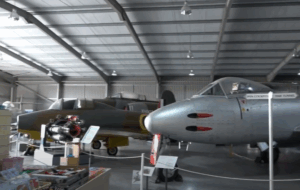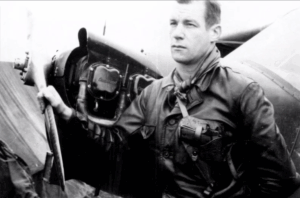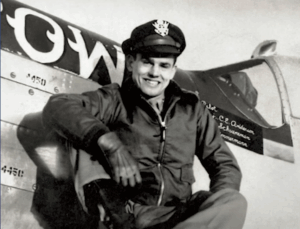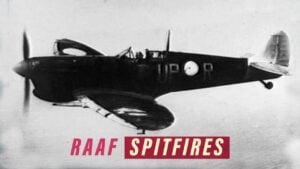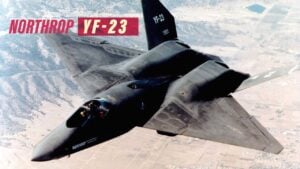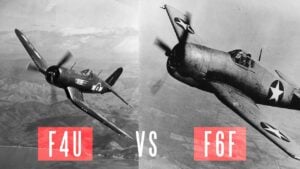The Luftwaffe WWII Plane Dubbed As The Screaming Death That Terrified People On The Ground

KNIGHT FLIGHT VIDEO / YouTube
Germany’s Messerschmitt Me 262, often referred to as the “Screaming Death,” was a revolutionary aircraft that terrified Allied forces during World War II. As the world’s first operational jet fighter, it combined unprecedented speed, powerful weaponry, and advanced aerodynamics. Its appearance marked a turning point in aviation history, although its deployment came too late to alter the course of the war. The aircraft’s legacy, however, left a lasting impact on both military and civilian aviation design.
The Me 262’s introduction resulted from years of experimentation with jet propulsion technology. In the 1930s, German physicist Hans von Ohain developed one of the first practical jet engines, which caught the attention of Ernst Heinkel, a leading aircraft manufacturer. Heinkel’s experimental jet aircraft, the He 178, successfully flew in 1939, showcasing the potential of jet propulsion. Spurred by these advances, the German Air Ministry issued a call in 1940 for a jet-powered fighter that could outpace contemporary piston-engine aircraft. Among the responses was Messerschmitt’s Projekt 1065, which evolved into the Me 262.

Development and Capabilities of the Me 262 Jet Fighter
The aircraft’s design featured many innovative elements. It had a sleek, aerodynamic fuselage measuring nearly 35 feet in length, with wings swept back at an 18.5-degree angle. This wing configuration reduced drag at high speeds, enabling the aircraft to achieve velocities unattainable for piston-engine planes. The twin-engine layout, with Junkers Jumo 004 turbojets mounted under each wing, further enhanced performance. These engines could generate a combined thrust that allowed the Me 262 to reach speeds of up to 540 miles per hour, significantly faster than the fastest Allied fighters such as the P-51 Mustang.
The Me 262 was armed with four 30-millimeter MK 108 cannons mounted in the nose. These weapons were capable of destroying Allied bombers with just a few direct hits, thanks to their explosive shells. Some variants of the aircraft were also equipped with air-to-air rockets, further increasing their destructive potential. This firepower, combined with the aircraft’s speed, made it a formidable opponent in combat.

Me 262 Cockpit Design and Operational History
The aircraft’s cockpit was designed with the pilot’s efficiency in mind. A bubble canopy provided excellent visibility, a significant improvement over the restricted views offered by earlier German fighters like the Bf 109. The cockpit was equipped with advanced features for its time, including a gyro gunsight that helped pilots aim more effectively. The instrument layout was optimized for ease of use, ensuring that critical controls were within easy reach.
The Me 262 made its first flight in April 1941, but initial tests used a piston engine due to delays in jet engine development. It wasn’t until mid-1942 that a fully jet-powered prototype took to the skies. Test flights revealed both the aircraft’s strengths and its challenges. While it could achieve impressive speeds, the slow acceleration of its jet engines made takeoffs and landings difficult. Engineers addressed some of these issues by adding features like a drogue parachute to assist with braking upon landing.
Despite its advanced design, the Me 262 faced numerous production and operational challenges. The engines were complex and required significant maintenance, and shortages of critical materials affected their reliability. Additionally, the aircraft’s high-speed performance demanded a level of piloting skill that few had the time to master. These factors, combined with Allied bombing campaigns targeting production facilities, limited the number of Me 262s that could be deployed.

Legacy and Impact of the Me 262 Jet Fighter
When the Me 262 finally entered service in 1944, it was too late to change the course of the war. However, it had a profound psychological impact on Allied pilots and ground forces. Stories of the jet fighter’s sudden attacks and rapid escapes spread quickly, adding to its fearsome reputation. Though its operational history was brief, the Me 262’s influence on post-war aviation was significant. Allied nations studied captured examples of the aircraft, incorporating its advanced design features into their own jet programs.
The Me 262 remains an enduring symbol of innovation under challenging circumstances. While its late introduction and operational difficulties limited its effectiveness, the aircraft demonstrated the potential of jet propulsion and set the stage for the future of aviation.














